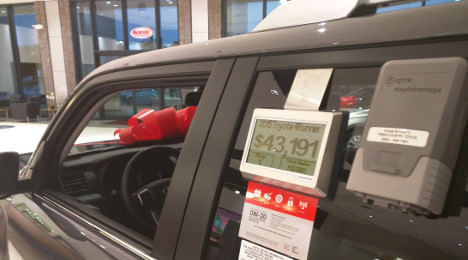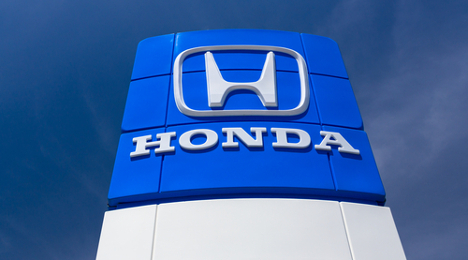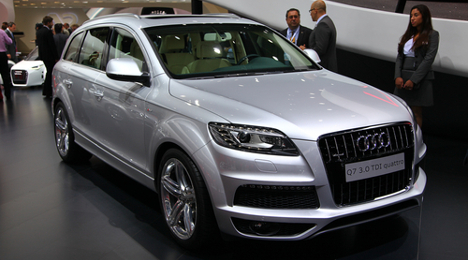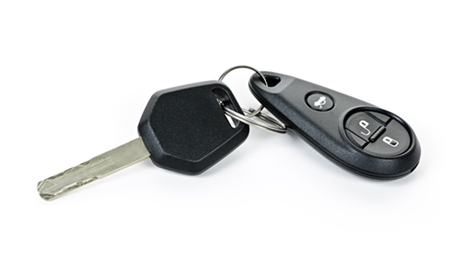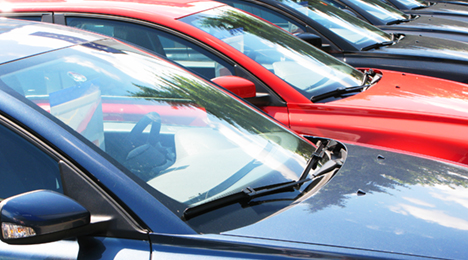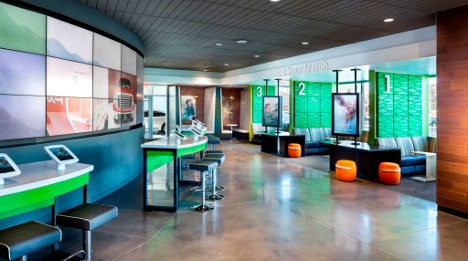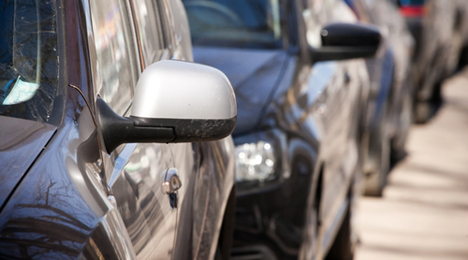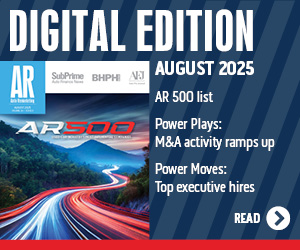You can probably expect nearly 40 million used-car sales this year, according to the latest Manheim Used Vehicle Value Index report.
Citing NADA data, Cox Automotive chief economist Tom Webb said in analysis accompanying the report that that growth in used sales has accelerated since the year’s outset. The full-year sum, he said, should “approach 40 million.”
Giving some additional context, Webb noted: “Part of this is ‘forced churn’ created by soaring new vehicle sales, but it is not churn conducted at a loss. Indeed, net profit margins are strong.”
As Auto Remarketing reported earlier, there were more than 30.7 million used sales in the first three quarters of the year, which beat last year's pace by 1.8 percent, according to NADA.
In late October, TrueCar was predicting the industry would reach $640 billion in used-vehicle revenue this year (up from $599.7 billion a year ago) with 38.4 million used cars sold, a 3.8-percent increase over 2014.
Another solid sign is the fact that the seven publicly traded dealership groups* have gone 25 consecutive quarters with same-store retail used-unit sales increasing, Webb said. In the most recent quarter, they were up nearly 5 percent on a sales-weighted basis.
“Although the average gross margin on these sales fell to a new low during the quarter, operating efficiencies and greater throughput per store produced record used-vehicle department profits,” Webb noted.
As for the new-car side, the SAAR was above 18 million in both September and October, Webb said, with the year-to-date SAAR at 17.3 million.
“The net impact of the new vehicle environment will likely remain benign relative to used vehicle residuals for the remainder of the year; but next year’s spring market may see a smaller bounce in wholesale pricing if a leveling, or declining, SAAR spurs additional incentive activity,” Webb said.
Staff writer Josh Hyatt contributed to this report.
*Note: Webb indicates that, "For this analysis, CarMax’s fiscal quarter was shifted forward one month to correspond with the other groups that report on a calendar year."
Dealers: ever wish the hang tags for your inventory on the lot would update themselves? That’s the aim for eCarTag, a subsidiary of Pearl Technology Holdings, who announced that its digital hang tags have just completed a first test pilot with Sonic Automotive, who plans to install the tags at all of its dealerships next year.
Sonic tested the tags for 90 days at its flagship dealership, Town and Country Toyota, in Charlotte, N.C.
Following what Pearl says was an “overwhelmingly successful” pilot, the company says that Sonic has ordered tags for its entire new and pre-owned inventory across the country, with a rollout to begin in 2016.
“We were thrilled that the pilot was so successful,” said Jeff Dyke, Sonic Automotive’s executive vice president of operations. “Dealers can sympathize with the amount of labor and effort that goes into changing paper tags on a daily basis in more than 100 Sonic dealerships across the U.S.
“Here at Sonic we have aggressive market pricing strategies across our dealerships that utilize a central custom pricing platform. The tags solve a huge issue for us and give us the speed and technology we have desperately needed. Such a simple idea, but not so simple to execute. So, I commend Pearl for bringing eCarTag to market and I’m sure other dealers will do the same.”
According to Pearl, the eCarTag digital tags are battery powered with an estimated battery life of approximately four years and a replacement cost of said batteries of only a “few dollars.” The tags can be installed and programmed by simply scanning a vehicle’s VIN and the digital tag with a smartphone. The tag then instantly synchronizes the vehicle to its listed price, which will proceed to update automatically.
The tags have other tricks, too, such as displaying up to five different messages in rotation, which can display targeted messages such as lowest payments, promoted sales, or even congratulate a customer who just purchased the vehicle.
“Paper hang tags have long been a hassle for dealers and are one of the most glaring changes that have been needed for decades,” said Bruce Thompson, Pearl’s chief executive officer. “Dealers are changing prices on the Internet faster than ever before. They pay attention to the competition and some dealers change prices daily. Most states regulate that the price on the Internet and the price on the lot must be the same.
“This creates a huge logistical challenge at the dealership. We simply catch the Internet feed from the dealer’s listing tool and as prices change on the Internet, they are instantly changed on the lot.”
For more information on eCarTags, visit its site here.
The DARCARS Automotive Group announced Monday that it has added Honda of Bowie to its list of franchises, bringing the overall tally to 38 franchises in more than 20 locations.
Labeling itself as the largest group of car dealerships in the greater Washington, D.C., metropolitan area, DARCARS also said that the Honda dealership will immediately be renamed DARCARS Honda.
"We are making an important investment in DARCARS' future and furthering our mission to create the best place to work," said John Darvish, DARCARS’ president and chief executive officer. "Throughout our discussions with Honda of Bowie ownership, I have been extremely impressed with their innovative management, highly-motivated team and very profitable business. We look forward to welcoming Honda of Bowie employees and customers to the DARCARS family."
Phil Morelli, the president of Honda of Bowie, commented on why it made sense to join the DARCARS team.
"DARCARS brings expanded resources to the table that will enable Honda of Bowie to rise to new levels in sales and customer service," Morelli said. "The existing culture and business model at Honda of Bowie align well with those of DARCARS and we know that our team will be in good hands as they join the DARCARS team."
For more information on the DARCARS Automotive Group, visit it site here.
Volkswagen, Audi and Porsche announced a stop-sale of certain models in their respective lineups earlier this week following the Environmental Protection Agency’s allegations that the second generation 3.0-liter V6 TDI engines contained a defeat device that circumvents the EPA’s emissions testing.
The stop-sale from the three brands does include their respective certified pre-owned vehicles with the engines — here are the affected models that franchises may still have on their lots as new or CPO vehicles equipped with the affected 3.0-liter V6 TDI engine:
Audi
— 2013 Audi Q7 TDI, CPO
— 2014 Audi A6 TDI, A7 TDI, A8 TDI, Q5 TDI, Q7 TDI; CPO
— 2015 Audi A6 TDI, A7 TDI, A8 TDI, Q5 TDI, Q7 TDI; new & CPO
— 2016 Audi A6 TDI, A7 TDI, A8 TDI, Q5 TDI; new & CPO (the Q7 was absent for this model year)
Volkswagen
— 2013 VW Touareg TDI, CPO
— 2014 VW Touareg TDI, CPO
— 2015 VW Touareg TDI, new and CPO
— 2016 VW Touareg TDI, new and CPO
Porsche
— 2014 – 2016 Porsche Cayenne diesel.
The Porsche data available in the company's news release Tuesday did not specify whether the stop-sale affected only CPO or all used models.
Brad Stertz, the senior manager of corporate communications at Audi of America, confirmed the above new and CPO stop-sales for both Audi and VW.
“The regulators say that it’s okay for customers and dealers to sell used cars still,” Stertz said, referring to the non-CPO variety. “And of course they’re still safe to drive and nobody (the customers) has to do anything until further notice.”
VW’s voluntary recall
Volkswagen announced Wednesday that it notified NHTSA regarding an upcoming voluntary safety recall of approximately 91,800 vehicles with 1.8- and 2-liter turbocharged gas engines from its 2015-2016 model year lineup.
The U.S. models, which include Beetle, Beetle Convertible, Golf, Golf SportWagen, Jetta and Passat, will be recalled due to some vehicles having an issue with the rear camshaft lobe, which has the potential to unexpectedly shear off from the camshaft.
If that happens, vacuum pump power is lost, resulting in the pump not delivering further vacuum supply to the brake booster, reducing engine power and causing the malfunction indicator light to come on.
After depletion of the vacuum reserve, the amount of effort it takes to depress the brake will increase. Reducing engine power and increasing the need for braking effort after the vacuum reserve has been depleted can increase the risk of a crash.
According to VW, no injuries related to this issue have been reported and it will notify all owners of affected vehicles and instruct them to arrange for an appointment at an authorized VW dealer for a remedy at no cost.
Group 1 Automotive, like many of its peers in the dealer group world, has seen used-vehicle volumes continue to blossom.
Or as one analyst put it during the retailer’s recent quarterly earnings conference call, it seems the used volumes for dealers may still have more room for “acceleration” than the new-car side.
A big part of that acceleration has to do with supply, says Group 1 president and chief executive officer Earl Hesterberg, whose group moved 32,491 used retail units during the third quarter, a 12.9-percent increase. In the U.S. alone, it sold 27,664 used vehicles for an 11-percent increase.
Through nine months, worldwide used retail sales for Group 1 have reached 93,913 units (up 14 percent). Its used sales in the U.S. are up 13.2 percent with 79,647 sold year-to-date.
“We’ve been starved for used cars, and quite frankly, we still are in many segments of the market, such as a little bit older cars that are still high quality, maybe in the 3- to 4-year-old range,” Hesterberg said.
“But there’s been a lot better supply of used cars this year, and I think that’s one of the factors,” Hesterberg continued. “And I also think that we’re a lot more proficient than we once were in the used-car business. And systems and things like that, and discipline, have I think made us better used-car retailers.”
Another question during the call looked specifically at the other areas of Group 1’s business that might be helped by increased used-vehicle sales.
“Obviously, being a good used-car operator is key to being a good new-car operator, as well. So, it supports the new-car business by being able to take the trade and turn it into retail,” said chief financial officer John Rickel.
“Clearly, it helps parts and service. The attachment rates on parts and service are not the same as new, but — especially as we continue to grow the CPO business — the CPO business does have a pretty good attachment rate, and we’re running about a 30-percent CPO mix.
“And then the final piece is in Pete’s world,” Rickel added, referring to Peter Delongchamps, Group 1 vice president of financial services and manufacturer relations. “You really can’t sell the F&I unless you sell that used retail unit. We continue to drive a lot of volume through F&I, which at the industry-leading levels that we’re running, generate a lot of gross profit through F&I for us.”
AutoNation insisted back in early September that it would be “worth it” to enact a policy not to sell, lease or wholesale any new or used vehicle that has an open safety recall.
The dealer group acknowledged that at the close of the third quarter, 16 percent of its used-vehicle inventory wasn’t available for sale because of those open recalls.
AutoNation chairman, chief executive officer and president Mike Jackson also conceded the policy not only pinched the group’s used-retail grosses in Q3 because “it took longer to prepare vehicles to have them frontline ready.”
Furthermore, Jackson also noted the company is going to have to beef up its inventory numbers during the fourth quarter in order to have a satisfactory number of units available. Nonetheless, Jackson remained steadfast in his conversation with Wall Street analysts after AutoNation reported its most recent quarterly performance that the group made the right decision.
“We’re taking a leadership position in something that’s clearly a black eye for the industry at the moment,” Jackson said during AutoNation’s latest conference call.
“The recall situation … AutoNation is going to be part of the solution, not part of the problem,” he continued. “That we put our customers and their safety first is a clear brand statement, and we see that the strength of our brand is every year more evident.”
Jackson looked at the issue of recalled vehicles from another perspective, too; one that wasn’t just about AutoNation. He believes there is “an issue out there floating” regarding the fact that currently franchised dealerships are the only facilities authorized to complete recall repair work “and completion rates are not acceptable.”
Jackson continued his thought by saying, “ You hear regulators talking about the fact, ‘Well, if the new-vehicle dealers and the manufactures can’t figure out how to get these repairs done faster and on higher level, we're going to open it up to everyone else.’”
The thought of independent repair shops and other operations being able to complete recall work “would be not a good development on any side,” according to Jackson.
“And I for one believe when you have an issue in the industry, be part of the solution,” he added. “It’s a genuine issue for our customers.”
So whether it’s finding those solutions for its own dealer group for the industry as a whole, AutoNation remains confident that its used-vehicle performance will not be negatively impacted long term because of the no-turn policy on recalled units.
“We think we’re going to work through all those issues over the next quarter and starting sometime in the first half of next year, going back to growing the used-vehicle business and improving the grosses,” Jackson said.
More commentary about latest acquisition
On the same day AutoNation released its Q3 performance, the dealer group also announced the acquisition of a dozen stores in Texas.
Jackson explained why these rooftops will take on the AutoNation moniker, not remaining with the name potential buyers already might know when these stores were part of the Allen Samuels Auto Group.
“Think about it,” Jackson began. “So, we buy the Allen Samuels Group in Texas. Great name, fine everything. We’re going to rebrand those stores AutoNation. And as good as the legacy names are, they're not as good as the brand name AutoNation and all the attributes that come with it.
“Also, we take all the marketing communication money that’s being spent by the Allen Samuels Group not to save, but to put behind the AutoNation name,” he continued. “So then, our whole presence in the state of Texas goes up by another factor. And it begins to feed on itself.
“Therefore, our confidence that we can execute on our plan to hit our return and the amount of risk involved, the risk goes down and the confidence goes up, all because of the brand AutoNation. That’s what a brand is doing for us at this point,” he went on to say.
Beyond just the name on the showroom building, AutoNation discussed the integration of these stores into the dealer group when the acquisition is expected to close in the first quarter of next year. Jackson leverages two of his top lieutenants — executive vice president and chief operating officer Bill Berman and executive vice president and general counsel Jonathan Ferrando — to complete this work.
“What we do is we take a very patient and balanced approach to our integration,” Berman said. “Jon and I go in and set the stage, initially going into the acquisition stores, laying the ground work and foundational components of how the transition is going to take place.
“When I talk about patience, we don't try to sit here and flip a switch and from one day to the next go from being a legacy store into an AutoNation store,” Berman continued. “But over several months, we’ve perfected a process of being able to integrate them into our systems, our processes and our pay plans.”
“They actually have a peer, a mentor, on an equal basis to help guide them through the transaction and the transition,” said Berman, who indicated AutoNation used this process to blend the last 12 stores into its portfolio.
“We’ve had a very, very low turnover rate, a high adoption rate and then been able to hit our pro forma target,” he added.
With evidently such an elaborate plan in place, investment analysts kept pressing Jackson to speculate on what acquisitions might be next. When the transaction for the Allen Samuels Auto Group is complete, AutoNation’s total store count will be 265 and total franchise count will be 372.
“We look for acquisitions that are a strategic fit for us, fit in our model where we want to be one-third domestic, one-third Asian, one-third German, and a cultural fit with our company,” Jackson said. “Certainly, these acquisitions are a cultural fit. Sometimes there is a difference in point of view about the future of a certain company.
“When we look at 100 deals, we maybe do 10,” he continued. “So there's a lot of discussions, a lot of conversations going on and it has to meet all those thresholds to meet that. We have a level of conversation that we can do a lot of deals next year. Whether they'll meet all that criteria or not, I don't know, and what I very much like is keeping the flexibility.”
Update on online activity
Jackson also sparked several inquiries when he reported AutoNation generated more than 25 percent of its total vehicle sales in the third quarter from its own websites.
Meanwhile, sales stemming from third-party sources have decreased to under 9 percent during Q3, a span that also included AutoNation severing its ties with TrueCar.
“I think that the third quarter is uncontestable proof that the strategy we’ve been talking about investing in has been validated and that we’re getting tremendous benefit from it,” Jackson said about projects that include AutoNation’s transaction website SmartChoice Express, which launched late last year.
“No question we’re a company that zigs when everybody else is zagging. I mean, that’s indisputable,” he continued.
“Here is the way I think about it. I came to conclusion several years ago that building a brand with genuine attributes was the only way to compete and win in this marketplace and not be disrupted and become a warehouse fulfillment center for others. That’s really where I didn’t want to end up. So, then when you say you have brand, the brand has to stand for something,” Jackson said.
Jackson emphasized that AutoNation’s websites are not just “informational; they’re transactional.” He also acknowledged that it “took a lot of money and effort” for AutoNation to reach this stage.
Wall Street observers then wondered if or when AutoNation might completely abandon third-party websites to move metal.
“There is a place in the market for third-party lead providers. There are dealers where it’s appropriate that they do business with them,” Jackson said.
“But here's the way I think about it. Every dollar I spend on marketing today sells a car today and sells a car tomorrow because I'm building a brand. And if I’m diverting 30 percent, 40 percent, ultimately 50 percent of my marketing budget to build somebody else’s brand that will play out where that ends,” he continued. “So, that's why the third quarter is so important. We were leading up to it. It was our pivot. And clearly, it works. And in my view, every year AutoNation is going to be stronger than the year before and all the benefits that comes from that.
“And so, that gives us a relevancy and approachability and an attractiveness in the marketplace that can cut through all the other choices that consumers have and give us a very interesting and compelling business,” Jackson went on to say. “But it has to be genuine, and you have to take risk and you have to take short-term disruption in order to get that differentiation. And we are doing that.”
Penske Automotive Group posted solid gains in the third quarter of 2015, highlighting a 7.7-percent year-over-year increase in overall used-vehicle retail unit sales worldwide.
The group has maintained that pace all year, with a similar jump – 7.8 percent, to be exact – in overall used retail units sold in the first three quarters of the year compared to the same period in 2014.
Company chairman Roger Penske, referring to overall operations worldwide, expressed satisfaction with his company’s results.
"We are pleased to deliver another record quarter, including double-digit growth in revenues, income from continuing operations and earnings per share," Penske said. "The diversification offered by our business highlights the opportunity we have for continued growth. At current levels, the year-over-year decline in exchange rates begins to subside during the fourth quarter which, coupled with the strong sales environment in both the U.S. and U.K. vehicle markets, and a robust medium and heavy-duty truck market in the U.S., we expect will continue to drive our business forward."
Take a look at the charts below to compare how the unit movement listed above compared to the revenue and profit streams created by used vehicles for Penske’s operations worldwide throughout the third quarter and year-to-date.
Penske made a point during his company's third quarter financial results conference call to note that the volatility in currency exchange, especially with the British Pound, played a role in the decreases in gross profit for the company overall.
Penske Q3 Glance at Used-Vehicle Results (Worldwide)
| Revenue (in millions) |
2015 |
2014 |
% Change |
| Used-vehicle retail (consolidated) |
$1,394.8 |
$1,303.2 |
7 |
| Used-vehicle retail (same-store) |
$1,364.3 |
$1,303.2 |
4.7 |
| Unit Sales |
|
|
|
| Used-vehicle retail (consolidated) |
51,031 |
47,363 |
7.7 |
| Used-vehicle retail (same-store) |
49,495 |
47,363 |
4.5 |
| Average Gross Profit Per Unit |
|
|
|
| Used-vehicle retail (consolidated) |
$1,652 |
$1,807 |
(8.6) |
| Used-vehicle retail (same-store) |
$1,685 |
$1,807 |
(6.8) |
Penske YTD (Q1-Q3) Glance at Used-Vehicle Results (Worldwide)
| Revenue (in millions) |
2015 |
2014 |
% Change |
| Used-vehicle retail (consolidated) |
$4,060.7 |
$3,773.8 |
7.6 |
| Used-vehicle retail (same-store) |
$3,978.4 |
$3,742.4 |
6.3 |
| Unit Sales |
|
|
|
| Used-vehicle retail (consolidated) |
148,718 |
137,973 |
7.8 |
| Used-vehicle retail (same-store) |
145,053 |
136,686 |
6.1 |
| Average Gross Profit Per Unit |
|
|
|
| Used-vehicle retail (consolidated) |
$1,732 |
$1,902 |
(8.9) |
| Used-vehicle retail (same-store) |
$1,749 |
$1,906 |
(8.2) |
*Data from earnings release
Penske also said that the company’s overall strategy moving forward is to continue to apply considerable emphasis on improving gross profit.
When asked about the group’s used-supply strategy and thought process when going into the fourth quarter, the company’s chairman summarized the situation in Q3 region-by-region.
“I think if we look at used, it kind of followed the lower new-car premium volume in the Northeast. And I would say that’s the whole Northeast, so we were actually down on units, probably around 500 units, in used in the Northeast,” Penske said. “But gross profit, when you look at it, was up overall about $200 per unit. In the Central (U.S.), we had an increase where we didn’t have that impact on used. From a sales perspective, we were up 700 units and we were down a little bit on our used gross profit, probably around $90. In the West, we were flat on gross profit and really flat on units.
“But overall, what I think we have to do is start early and look at our strategy for inventories on used cars.”
Penske then broke down the used inventory situation by predicting a possible wave of incoming off-lease vehicles.
"I think managing our inventory down is going to be key because there will be a lot of cars coming off lease, and I think residuals will take somewhat of a beating as we get into Q4 and getting into the first quarter, or Q1," Penske said. "So we want to have our inventory balanced properly.”
After Sonic Automotive announced record quarterly new and used sales, the company’s third-quarter earnings conference call centered largely around its new standalone used store brand, EchoPark Automotive.
In the company’s initial results release, it said that the EchoPark stores retailed 920 pre-owned units during Q3, which is up 4.4 percent from the 881 units sold in Q2.
Sonic continues to see success with its three EchoPark stores — which are part of a new used-sales strategy with rooftops near Denver.
Although EchoPark’s Q3 sales were up from second-quarter results, investors questioned whether or not expansion was slowing, since sequential growth was stronger in the first and second quarters.
Sonic management reassured the audience on Wednesday’s conference call this was not the case, and that the company plans to grown EchoPark’s store count shortly.
“Oh, yeah. We're right in line if not better, and that's just September; it's just like June, July and August. It's just a stronger period of time in the Denver market for used-car sales, but that's nothing more than seasonality built in,” said Scott Smith, Sonic’s president. “And we are right in line; as a matter of fact we've announced last quarter that we were going after our first market and looking at our second pod.
“But the board has challenged us to go ahead and open up two pods. Our team is prepared for that. And we've picked out both of those markets and are actively purchasing real estate now to get those next-generation stores up and running.”
Jeff Dyke, executive vice president of operations at Sonic, elaborated a little bit more on that “next-generation” concept, explaining that the new stores are significantly cheaper to make operational. According to Dyke, once the company buys property for an EchoPark store, the dealership can be up and running in six months. And Sonic aims to bring that down to four months.
The next-generation stores will also have more inventory, bringing the number up from 125 units to a range of 150-200.
Sonic management said the company’s goal is to have 25 to 30 EchoPark stores operating by the end of 2017.
And EchoPark stores are outperforming the company’s internal projections, Dyke added.
“They're really doing a great job and the customer demand, if you go online and read some of the Yelps and things that our customers are saying about us, they absolutely love it, and our associates love it,” Dyke said.
When asked about return on investment in the current EchoPark stores, Sonic chief financial officer Heath Byrd did not seem worried.
“We're building these stores with about a $7 million to $7.5 million cost structure, including real estate,” said Byrd. “And we should be able to sell, when each neighborhood store is rolling, 125 to 150 cars. That's going to yield a $1.2 million to $1.5 million a year in net income.”
And in fact, the company expects EchoPark to positively impact company metrics, such as used gross profit per unit, which was down about $128 year-over-year this past quarter.
When asked whether the EchoPark stores would serve to help push used-vehicle gross profit per unit up, Dyke said, “It should help.”
“EchoPark is running used, F&I and recon combined at $3,300, something like that … And so, it should help it. The used-car margins are better, so it should help it, especially versus the import and domestic stores,” said Dyke. “But what's really going to be fun is just the extra gross dollars it's going to bring to the table just because we're selling so many cars, but that's going to make a big difference.”
Management also touched on the service business potential of its EchoPark stores during the call, as well as how they plan to cut down on recon costs for the stores’ inventory in the future.
Smith said, “The way we're looking at it is we've built enough capacity to-date to handle our reconditioning. Right now, we're reconning so many cars so fast, in trying to keep up with that that if we go out and start really heavily advertising and marketing for service, it's going to put a damper on the amount of cars that we can get through.”
That said, the company is in partnership with Manheim to ease the burden of making used vehicles front-line ready.
“We’re working with our partners from Manheim to have them begin to take over that load and to begin, based on our buying criteria and our buying tools, buying the cars, reconning the cars, doing the detail of the cars, taking the photos, uploading them, and then delivering and putting them on our shelf, kind of like Coca-Cola would do for Walmart,” Smith explained.
He said that this partnership will keep the dealer group from having to build huge recon facilities for their EchoPark stores, as well as cut doen on the added expense of hiring personnel to man the facilities.
“So we're working very hard to mitigate that expense so that we can move forward and grow profitability with a lower cost basis,” Smith said.
AutoNation continued its upward movement in the number of used vehicles retailed during the third quarter, pushing its total through the first nine months of the year 7.4 percent higher than the same point in 2014.
The dealer group reported on Wednesday that it retailed 56,584 used vehicles in Q3, marking a 1.4-percent uptick from a year ago. That quarterly figure moved the company’s used-retail total through Sept. 30 to 161,376 vehicles, an amount higher by 11,994 units.
Like dealerships of all sizes are experiencing, AutoNation also saw its gross profit on those retailed used vehicles soften in Q3. The latest figure dipped by $109 year-over-year to come in at $1,513.
Helping to pick up the slack, AutoNation made a $145 improvement in F&I gross profit as the metric stood at $1,546 at the close of the quarter.
That retail used performance as well as the F&I activity helped AutoNation to generate Q3 total net income from continuing operations of $119 million, or $1.05 per share, compared to net income from continuing operations of $107 million, or $0.90 per share, for the same period in the prior year. The rise represented a 17-percent improvement on a per-share basis.
The company’s Q3 revenue totaled $5.4 billion compared to $4.9 billion in the year-ago period, an increase of 9 percent. Executives cited stronger performance in all business sectors — new vehicles, used vehicles, parts and service, and finance and insurance.
In the third quarter, AutoNation's retail new vehicle unit sales increased 7 percent overall and 5 percent on a same store basis.
“We are very pleased with our strong year-over-year growth across all areas of our business, as well as our 20th consecutive quarter of double-digit year-over-year growth in EPS,” AutoNation chairman, chief executive officer and president Mike Jackson said.
“This quarter we set another record for the highest ever quarterly EPS from continuing operations,” Jackson continued.
“We are pleased with how the AutoNation brand continues to be embraced and with the progress of our digital initiatives,” Jackson went on to say. “Our consumer-friendly websites now generate over 25 percent of unit sales while sales from third-party sources have decreased to under 9 percent.”
And as previously reported by Auto Remarketing on Wednesday, AutoNation is making a major expansion in Texas by acquiring a dozen stores.
It was a quarter full of records for Sonic Automotive — an assertion that became clear when company management announced Q3 results on Wednesday.
On top of scoring record Q3 income from continuing operations, new retail sales, fixed ops gross profit and more, the company also sold more used retail units in the quarter than ever before.
Sonic sold 30,467 used vehicles in Q3, which is up 10.6 percent year-over-year. Same-store used retail sales came in at 29,173, which is up 8.4 percent from 2014.
Management also pointed out the company retailed 100 pre-owned units per store per month this past quarter, remaining consistent with Q2 results.
Scott Smith, Sonic's chief executive officer, noted, "The overall increase in retail activity and our dedication to provide our customers with an outstanding buying and servicing experience contributed to record results during the quarter. The automotive retail environment continues to expand and present us with opportunities to strengthen and grow our business."
The group notched all-time record quarterly pre-owned gross profit, as well, which came in at $41.7 million, up 1.2 percent over the prior quarter. Interestingly, gross-profit per-unit for used retail sales came in at $1,370, which is down 8.5 percent year-over-year.
The company continues to see success with its Echo Park stores — which are part of a new used-sales strategy with rooftops near Denver. In Q2, the Echo Park stores retailed 920 pre-owned units, which is up 4.4 percent from the 881 units sold in Q2.
In light of this success, Sonic intends to expand the Echo Park store lineup shortly.
"We are extremely excited about the development of our EchoPark brand," Smith said. "Our EchoPark stores continue to grow, and we expect two additional stores to open in the Denver market in the first half of 2016. We are in the process of acquiring property in two additional markets as we look to accelerate the EchoPark rollout in the latter part of 2016 and early 2017."
The company also said its One-Sonic-One Experience (OSOE) initiative, which the company calls a customer-centric sales process that is fast and offers transparent, no-negotiation low pricing, is continuing to see growth. Currently, the OSOE is offered in five Sonic-owned dealerships in and around Charlotte, N.C.
"During the quarter, our One Sonic-One Experience stores experienced year-over-year net new-vehicle market share gains,” said Smith. “Our customers love the speed and ease offered by this buying experience."
Jeff Dyke, Sonic’s executive vice president of operations, added, “We are gaining share across all brands in our One Sonic-One Experience stores in Charlotte and should be ready to begin phase I of our technology rollout in the first quarter of 2016.”
Dyke also pointed out the company’s efforts to ramp up its technician count for service and parts in light of the influx of recent recalls is “paying off.”
The stats illustrate this conclusion, as the company experienced record Q3 fixed operations gross profit of $169.7 million, up 9.3 percent year-over-year.
"We continue to make progress on all fronts of our business,” Dyke said. “Our core business is performing well and steps that we have taken to increase inventory levels in pre-owned and our technician count are beginning to pay off.”
Other key stats from Sonic’s Q3 performance include:
- Record third quarter net income from continuing operations of $27.1 million, up $3.1 million, or 12.7 percent year-over-year
- All-time record quarterly new retail sales of 36,891 units, up 1.6 percent over the prior year quarter
- All-time quarterly total gross profit of $360.3 million, up 5.5 percent over the prior year quarter.
In another sign of a successful quarter, Sonic also announced its board of directors approved a quarterly dividend of $0.0375 per share payable in cash for stockholders of record on Dec. 15. The dividend will be payable on Jan. 15.
Smith said, "This 50 percent increase in the dividend demonstrates our commitment to return capital to shareholders and our continued confidence in operations and prospects for growth."
Editor’s Note: Stay tuned to future AR Today newsletters for more pre-owned insight into Sonic’s third-quarter performance.


